Find the best driving school for you

Oops! Unable to proceed
Please search City before proceeding further.
RTO Exam
LL Test Question
Learning licence test questions for learner’s licence are in the multiple-choice format, where you need to choose the correct answer from the options given for each question. . In the learners test or LL test , there are 15 multiple choice questions asked . You need to answer 9 questions correctly to clear the test. You get 30 seconds to answer each question.
To crack the RTO exam its important to practice properly. Here is the list of driving licence test questions for learner’s licence.
The driving licence test questions for a learner’s licence are based on the traffic rules and regulations. Test for learning licence check your theoretical knowledge about road safety and traffic rules.
Once you complete the test, you will know whether you have cleared or failed your test. If you have correctly answered the required number of driving licence test questions for a learning licence, the RTO will issue your licence. In case you have failed the test, you can reappear for it in one week.
In order to prepare for these driving licence test questions, you can practice sample questions from the mock test for RTO exam section.
You can practice RTO exam for free here. People are practicing learning license test questions to increase their chances of passing the theory test on the very first attempt. Practice multiple times to cover all 500+ learners test questions in our question bank for free.
Read More
Read Less
Questions
Road Signals
1. Near a pedestrian crossing, when the pedestrians are waiting to cross the road, you should
Sound horn and proceed
Slow down, sound horn and pass
Stop the vehicle and wait till the pedestrians cross the road and then proceed
Increase the speed
2. You are approaching a narrow bridge, another vehicle is about to enter the bridge from opposite side you should
Increase the speed and try to cross the bridge as fast as possible
Wait till the other vehicle crosses the bridge and then proceed
Put on the head light and pass the bridge
Slow down, sound horn and pass
3. The following sign represents..

Stop
Hospital ahead
No Horn
No parking
4. When a vehicle is involved in an accident causing injury to any person
Take all reasonable steps to secure medical attention to the injured and report to the nearest police station within 24 hours
Take the vehicle to the nearest police station and report the accident
Stop the vehicle and report to the police station
None of these
5. The following sign represents..

There is no road to the left
Compulsory turn left
Stop to the left
Keep left
6. The following sign represents...

Speed breaker ahead
Traffic island ahead
Give way
Hospital ahead
7. On a road designated as one way
Should not drive in reverse gear
U turn prohibited
Overtaking is prohibited
Parking is prohibited
8. The following sign represents..

Parking prohibited
U-turn prohibited
Sharp curve to the right
Right turn prohibited
9. The following sign represents.

One way
Speed limit ends
Overtake prohibited
No entry
10. You can overtake a vehicle in front
Through the left side, if the road is wide
Through the left side
Through the right side of that vehicle
Through any side as per choice
Traffic Police Hand Signals
Mandatory Signs
Cautionary Signs
Informatory Signs
Traffic Light Signals
Road Marking
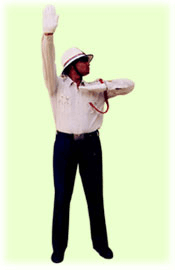
To stop vehicles approaching simultaneously from front and behind.
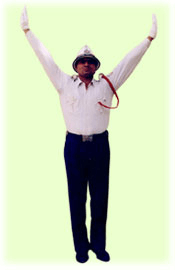
Warning signal closing all vehicles

To start vehicle approaching from left
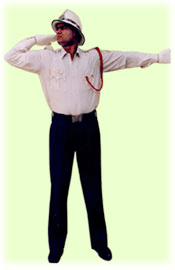
To start vehicles coming from right
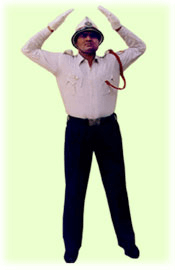
To change for the sign
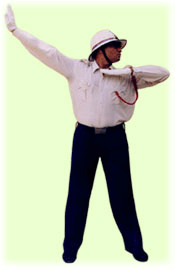
To start one sided vehicles
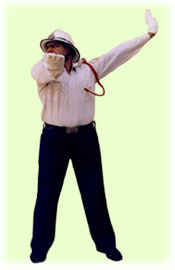
To start vehicles on T-Point
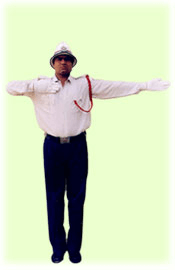
To give salute to the VIP
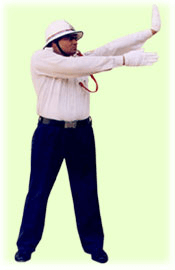
To Control vehicles on T-Point

Straight Prohibited or No Entry

One Way

One Way

Prohibited in both directions

Motor Vehicles Prohibited

Trucks Prohibited

Bullock and Hand cart Prohibited

Bullock cart Prohibited

Horse cart Prohibited

Hand Cart Prohibited

Cycles Prohibited

Pedestrian Prohibited

Right Turn Prohibited

Left Turn Prohibited

U Turn Prohibited

Overtaking Prohibited

No Horn

No Parking

Stopping Prohibited

Speed Limit (50 km/hr)

Vehicle Width Limit

Vehicle Height Limit

Vehicle Length Limit

Load Limit

Axle Load Limit

Mandatory Bus Stop

Road Ends here

Only for Cyclist

Blow Horn Compulsorily

Compulsory Keep Left

Compulsory Turn Left

Compulsory Right Turn

Compulsory Ahead or Right Turn

Compulsory Ahead or Take Left

Compulsory Ahead

STOP

Give Way

Left Hand Curve

Right Hand Curve

Right Hair PIn Bend

Left Hair Pin Bend

Right Reverse Bend

Left Reverse Bend

Steep Ascent

Steep Descent

Narrow Road Ahead

Road Widens Ahead

Narrow Bridge

Slippery Road

Loose Gravel

Cycle Crossing

Pedestrian Crossing

School Ahead

Men At Work

Cattle

Falling Rocks

Ferry

Cross Road

Gap in Median

Side Road Right

Side Road Left

Y- Intersection

Y- Intersection

Y- Intersection

T- Intersection

Staggered Intersection

Staggered Intersection

Major Road Ahead

Round About

Dangerous Dip

Hump or Rough Road

Barrier Ahead

Unguarded level Crossing (200 m)

Unguarded level Crossing (50-100 m)

Guarded level Crossing(200 m)

Guarded level Crossing(50-100 m)
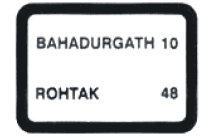
Re-assurance sign
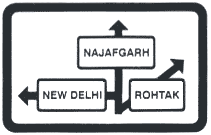
Destination sign
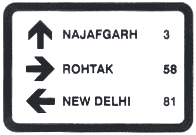
Destination sign

Direction Sign

Place Identification Sign
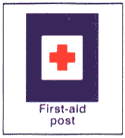
First Aid Post sign
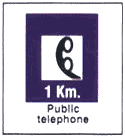
Public Telephone Sign
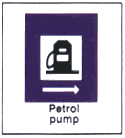
Petrol Pump Sign
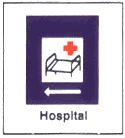
Hospital Sign
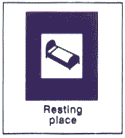
Resting Place Sign
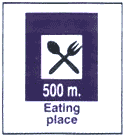
Eating Place Sign
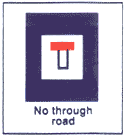
No Thorough Road Sign
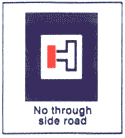
NO Thorough Side Road SIgn
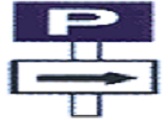
Park This Side Sign
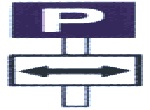
Parking both Sides Sign

Parking for Scooters and Motor cycles Sign

Flood Gauge
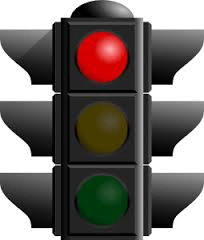
STOP : Stop well before the stop line, and don’t crowd the intersection. This not only obstructs a clear view of the intersection for other road users, but also make the zebra crossing unsafe for the pedestrians. You are allowed to turn left at the red signal unless there is a sign specifically forbidding you to do so. When turning, yield the right of way to pedestrians and vehicles from other directions.
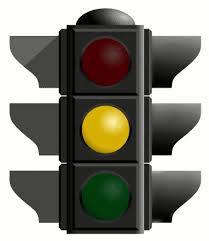
Amber Light :The Amber light gives time to vehicles to clear the road when the signal is changing from green to red. If caught in the Amber signal in the middle of a large road crossing do not press your accelerator in panic but do continue with care.
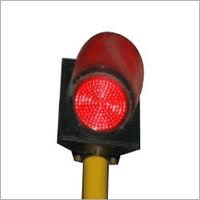
Fleshing Red :You must come to a complete stop, yield to all other traffic and to pedestrians. Proceed only when the way is clear.
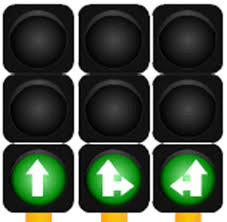
GREEN ARROW SIGNAL :To proceed with caution in the direction the green arrow points. Remember to yield to all pedestrians and vehicles already in the intersection

GO :If first in line, do not go tearing off at the green signal but pause to see whether vehicles from other directions have cleared the road. Sometimes you are allowed to turn left or right too, unless separate signs exist for each direction. if turning, yield the right of way to pedestrians and vehicles from other directions.
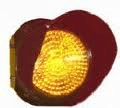
Flashing Yellow :To slow down and proceed with caution

Bare roads:Bare roads will lead to total vehicular confusion. Markings are painted on the road to direct, guide and regulate the road user. Road markings include all lines patters, words and colours applied on or attached to the road surface or curb, for the said purpose

On undivided two-way roads, the center line separates the opposing streams of traffic and facilitates their movements. The center line can be a single broken line, a single continuous solid line (barrier line), a double solid line or a combination of solid line and broken line. Single and double solid lines, whether white or yellow, must not be crossed or even straddled.
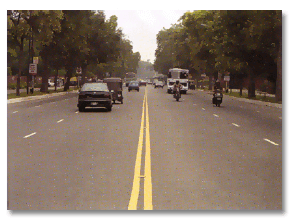
Traffic Paints:Traffic paints are commonly used for road markings. Other materials such as, road studs, cat's eyes and thermoplastic strips also find their application in road markings. These markings promote road safety and ensure smooth flow of traffic. Sometimes, road markings are used to supplement the message of road signs and other devices
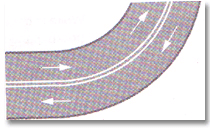
Double Continuous lines are used where visibility is restricted in both directions. Neither stream of traffic is allowed to cross the lines.

Centre barrier line marking for a six lane road. On undivided roads with at least three traffic lanes in each direction, the centre line marking shall consist of a double solid continuous line .

Border or Edge Lines: These are border lines as they tell the driver till which edge can he drive safely. These lines are usually drawn on the edge of the carriageway.

Centre barrier line marking for a four lane road:On undivided roads with at least two traffic lanes in each direction, the center line marking shall consist of a single solid continuous line of 150 mm wide with lane markings of 1.5 m segments and 3 m gaps

Combination of solid and broken lines:If you are on the side of the broken line, then you can cross the line, provided it is safe and not dangerous to do so. You should never cross the line if the line happens to be continuous and not a breaking one

Give Way Line:A double dotted slanting line is observed at road junctions and this is the give way line. You will also find a red reverse triangle on this sign. It allows the traffic to move on the main road.

Lane Line:The division of the carriageway into separate lanes for traffic traveling in the same direction on either side of the center-line or median strip helps to promote travel in proper lanes and curb the meandering tendency of the drivers, thus promoting safety and ensuring maximum capacity. Traffic lane lines are broken lines which permit lane changing with caution. The traffic lane lines shall be normally be single broken lines.
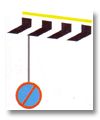
Parking Prohibited Lines:A no-parking sign either on a continuous yellow line on the kerb or on the edge, means that much area is the no-parking zone.

Pedestrian Crossings:Pedestrian crossings are also called zebra lines for there are black and white stripes painted parallel to the road. Pedestrians are expected to follow the traffic lights and cross only at these points. The drivers have to stop at these signs to allow the pedestrians to pass. These markings are important and the drivers have to respect them for they grant the right of passing or moving or crossing the road to pedestrians.
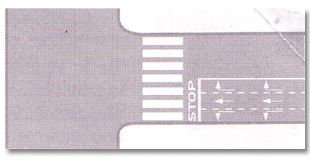
Stop Line:A stop line is one which you find before a road intersection. This stop line is usually a lone solid slanting line. Here is where you need to stop at the instructions of the duty traffic police. The traffic signals are also located on this line. Usually, the pedestrian crossing is also marked at this juncture but the stop line will be before the crossing to facilitate the pedestrians.
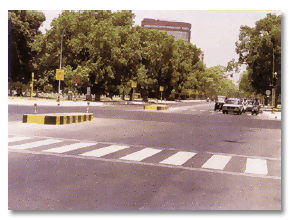
White Lines:White markings are used to indicate carriageway markings. If restrictions have to be indicated, then yellow markings are used. If you find white or yellow together and painted along with black lines, then they mean these are kerb markings or object markings.
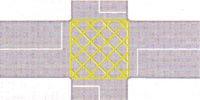
Yellow Box Junctions or Keep Clear:Yellow box junctions are yellow diagonal lines within a small box. It means that the drivers can pass it only if there is enough space ahead of this junction. In no ways, can a driver stop at this marking, even if it means stopping for a brief period of time.
